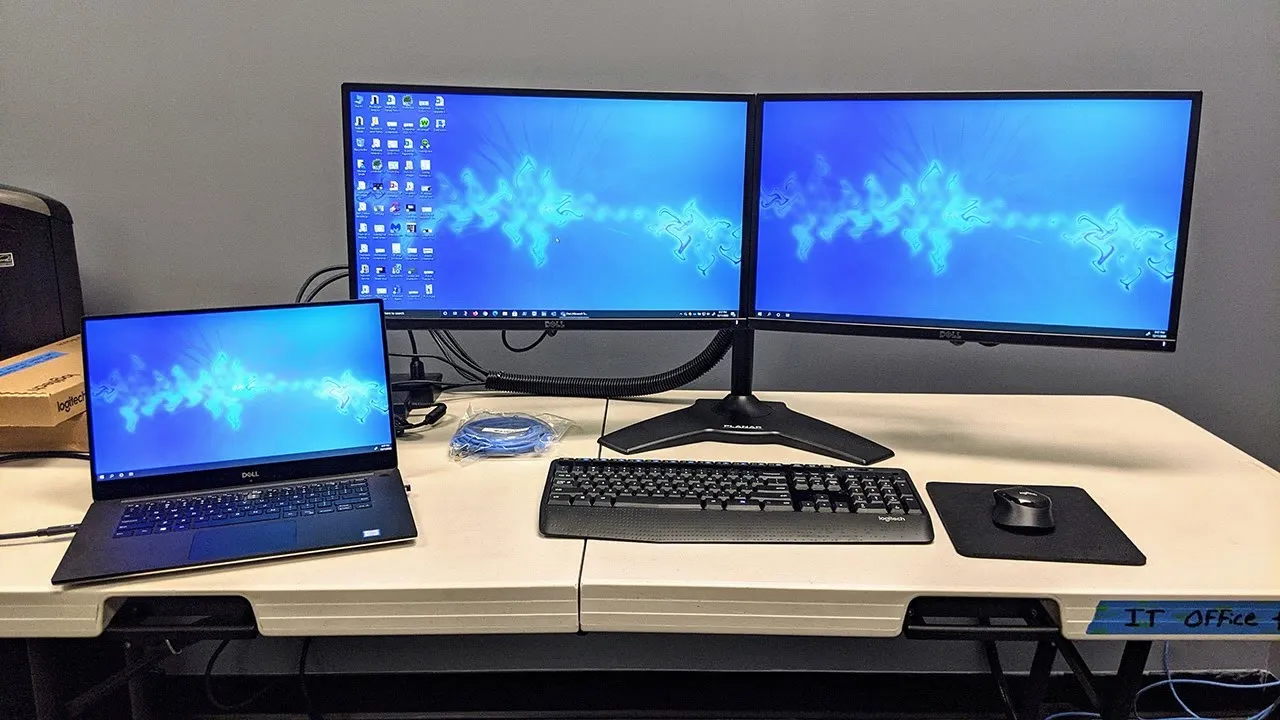Title: Mastering Dual Monitor Setup with Your Laptop Docking Station: A Comprehensive Guide
Introduction
In today’s dynamic work environment, maximizing productivity often entails harnessing the power of multiple screens. Setting up dual monitors with a laptop docking station is a game-changer, providing enhanced multitasking capabilities and a more immersive computing experience. This guide will walk you through the seamless process, empowering you to unlock the full potential of your workstation.
Further Reading: How To Take Screenshots On Acer Laptop
Understanding Dual Monitor Setup
Before diving into the setup process, it’s essential to grasp the fundamentals of dual monitor configuration. Dual monitors allow you to extend your desktop workspace, effectively doubling your screen real estate. This setup facilitates multitasking, enabling you to simultaneously view different applications, documents, or websites on separate screens.
Check Out: What Are The 10 Advantages Of Laptop
Choosing the Right Laptop Docking Station
Selecting the appropriate laptop docking station is paramount to a successful dual monitor setup. Consider factors such as compatibility, port availability, and additional features like charging capabilities and connectivity options. Opt for a docking station that aligns with your specific requirements and supports dual monitor functionality seamlessly.
Also Read: How To Reformat Laptop Windows 10
Connecting Your Monitors to the Docking Station
Once you’ve acquired a compatible docking station, the next step is connecting your monitors. Follow these straightforward steps:
- Inspect Ports: Identify the available ports on your docking station and monitors. Common connection interfaces include HDMI, DisplayPort, USB-C, and VGA.
- Cable Connection: Use appropriate cables to connect your monitors to the corresponding ports on the docking station. Ensure a secure connection to avoid signal disruptions.
- Driver Installation: In some cases, you may need to install drivers for your monitors to ensure optimal performance. Visit the manufacturer’s website to download the latest drivers or use the installation CD provided with your monitors.
Configuring Display Settings
Once the physical connections are established, it’s time to configure your display settings:
- Access Display Settings: Right-click on your desktop and select “Display Settings” from the menu.
- Identify Monitors: The Display Settings window will show representations of your connected monitors. Identify each monitor by its corresponding number.
- Arrange Monitors: Arrange the monitors according to your desired layout by dragging and dropping them in the display grid.
- Adjust Resolution and Orientation: Customize resolution, orientation, and scaling options for each monitor to optimize visual clarity and alignment.
Optimizing Productivity with Dual Monitors
Dual monitors offer a plethora of productivity benefits:
- Enhanced Multitasking: Seamlessly switch between applications and tasks.
- Streamlined Workflow: Compare documents side by side or reference information across multiple screens.
- Increased Efficiency: Reduce the need for window toggling and streamline workflow processes.
FAQs (Frequently Asked Questions)
Q: Can I use dual monitors with any laptop docking station?
A: While many docking stations support dual monitor functionality, it’s essential to verify compatibility and available ports before making a purchase.
Q: Do I need additional graphics cards to set up dual monitors?
A: In most cases, modern laptops and docking stations can handle dual monitor setups without the need for additional graphics cards. However, it’s advisable to check the specifications of your devices to ensure compatibility.
Q: Can I mix different monitor brands and resolutions in a dual monitor setup?
A: Yes, you can mix different monitor brands and resolutions in a dual monitor configuration. However, keep in mind that achieving consistent visual quality and alignment may require additional configuration adjustments.
Conclusion
Mastering the art of dual monitor setup with your laptop docking station elevates your computing experience to new heights. By following the steps outlined in this guide and leveraging the power of dual monitors, you’ll unleash your productivity potential and transform your workstation into a dynamic hub of efficiency. Embrace the possibilities, and embark on your journey to enhanced productivity today!
Related Post: How To Take Screenshot On Laptop Windows
Check Out: How To Reformat Asus Laptop

